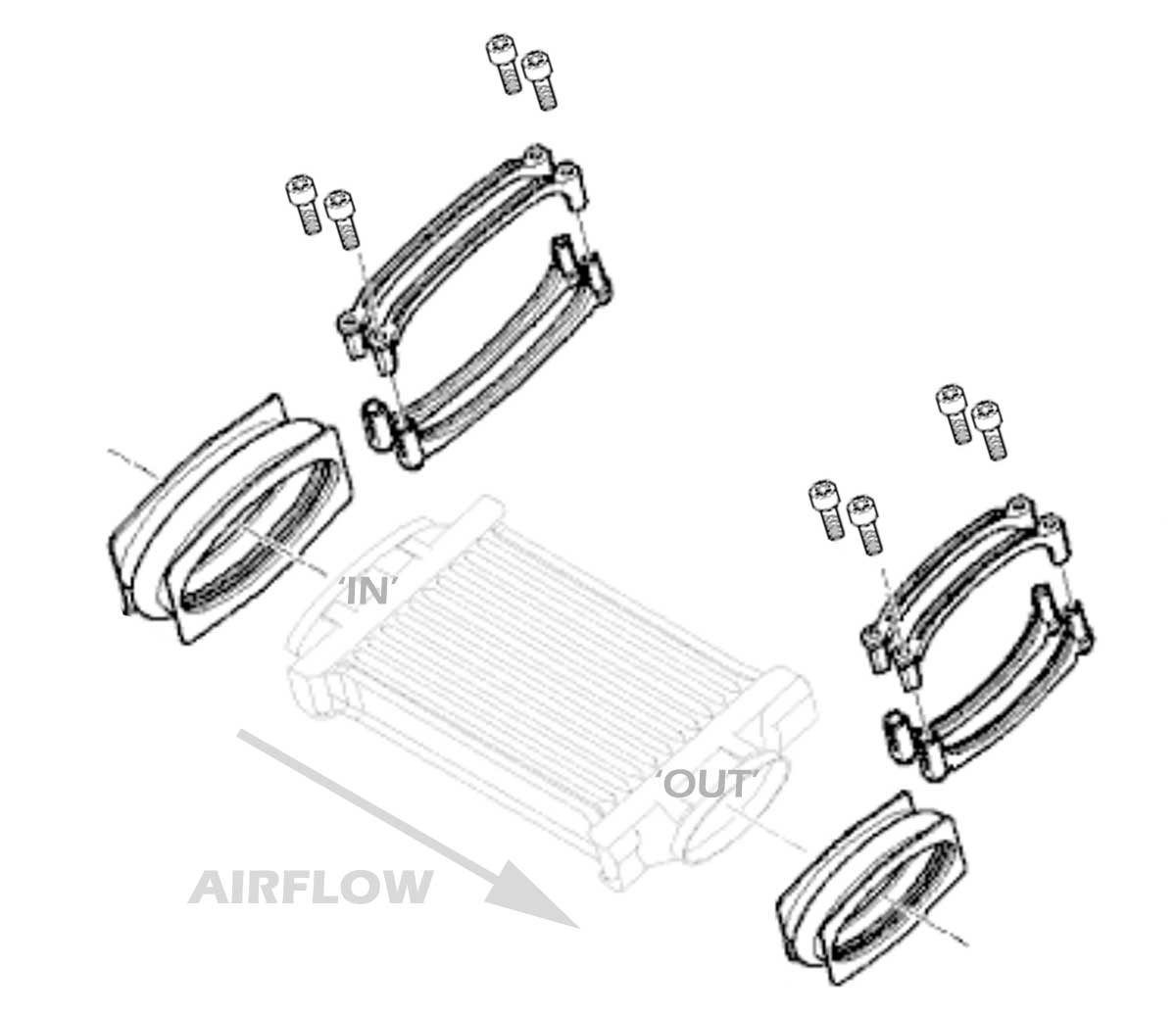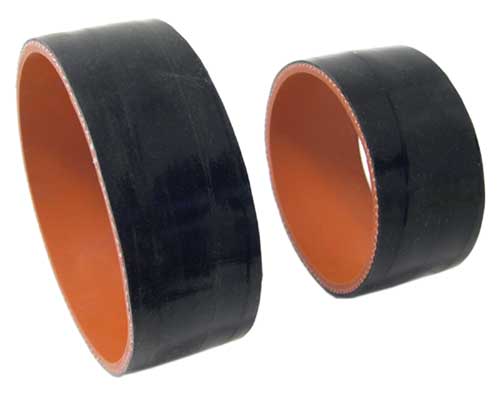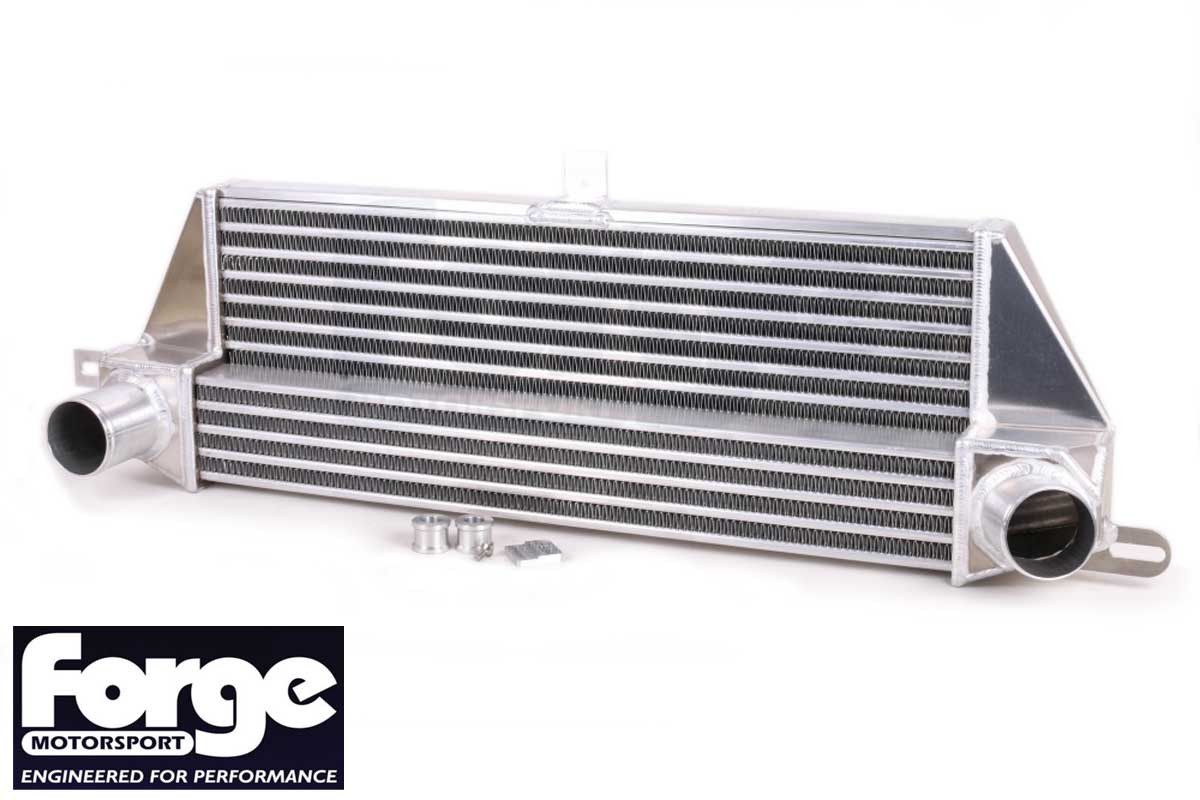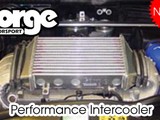Intercooler Upgrades Are a Cost-Effective Way of Increasing The Power of Your MINI
2015 is the 130 year anniversary of Gottlieb Daimler’s 1885 patent on the use of a supercharger on an internal combustion engine. Daimler recognized the Roots blower, or supercharger, developed for blast furnaces and other state of the art industrial applications could boost the performance of his engines. His invention was made just a few years after departing his work with Nikolaus Otto, the famous inventor of the four stroke engine. His partner in his new venture is someone whose name is also famous in automotive circles – Wilhelm Maybach. Maybach and Daimler’s first engine, with 264 cc displacement, produced 0.5 HP. By 1921 the first series-produced cars with roots blower as superchargers were being sold by Mercedes (Kompressor, further developed by Ferdinand Porsche while working for Mercedes) and were producing horsepower in the mid double-digits! Our beloved MINI Cooper S with its positive displacement forced induction Roots blower and four vertically aligned cylinders can trace its lineage back to those early Kompressor engines almost 100 years ago.
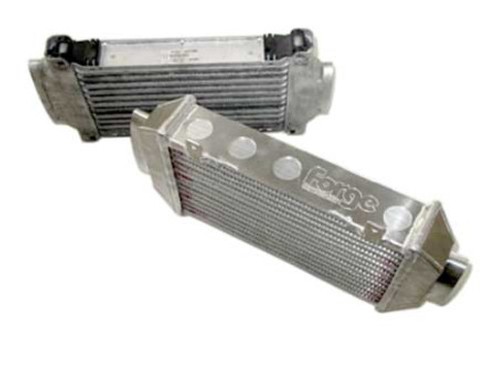
The appeal of the supercharger for the internal combustion engine is in improvements seen by pumping pressurized air into the combustion chamber resulting in more horsepower with minor additional added weight. Unfortunately, the process of compressing the air increases its temperature that can cause engine-killing detonation (pre-ignition) and reduce the benefit of the supercharger.
The intercooler solves the unwanted heat problem by cooling the air charge after compressing it to avoid detonation and potential engine damage. The only catch is that an intercooler has some resistance to flow, which causes a pressure drop, which reduces the benefit of the supercharger. An ideal intercooler results in a large temperature drop with no pressure drop. A lousy one has a large pressure drop and limited cooling, a situation that may make the chance of detonation even greater than without any intercooler.
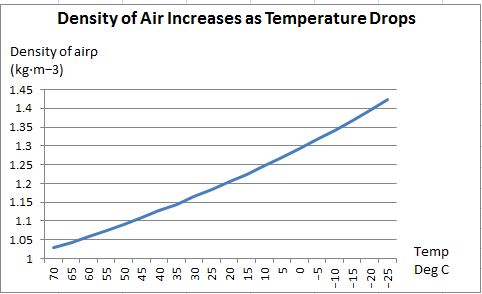
If the intercooler is able to cool the air, the density increases. This graph shows the density of dry air at sea level for reference. Let’s walk through this data to get an idea of what is possible – for those of you with Ph.D.’s, this is clearly a simplification, but it is useful to explain the concept. These numbers are based on dry air at sea level.
If we start with 20 °C air and assume it is 70 °C coming out of the supercharger, the density has decreased from 1.204 Kilogram/cubic meter to 1.029 Kg/m3 – that’s a 14.5% drop in air density (equal to about 2.1 psi lost boost) which is reducing the benefit of the supercharger. And, the extra heat is increasing your chances of detonation that causes the engine computer to back things down, robbing more power.
Let’s compare two imaginary intercoolers - one that gets you a 20 °C temperature drop and a better intercooler that gets you a 40 °C temperature drop. The decent intercooler will drop the air temperature to 50 °C, the air density will be 1.092 Kg/m3, a 9.3 % drop and equal to roughly 1.4 psi of lost boost – with this unit, you have gained the benefit of 0.7 psi of boost and reduced the chances of detonation. With a better intercooler giving a 40 °C temperature drop, the air temperature will be around 30 °C and the air density will be 1.164 Kg/m3, just a 3 % loss and equal to Just 0.5 psi of lost boost – here you have gained about 1.6 psi of boost over the non intercooled engine and really cut the detonation problem.
Adding a reduction pulley is a common improvement to R52 and R53 MINI’s, which increases boost but also increases the charge air temperature, further straining the stock intercooler and increasing the chances for detonation. Upgrading the intercooler (and choosing higher octane fuel and switching to cooler spark plugs, but those are stories for another time) is a great enhancement to go along with the reduction pulley to see the maximum benefit of the extra boost and to reduce the chances for detonation that robs power.
MINI’s come with adequate intercoolers.
An oversized intercooler such as the Forge Motorsports intercooler for the R52 and R53 offers better cooling, reducing the chances of detonation and avoiding the unwanted loss of performance associated with the intervention of the engine management computer. Their data shows a 10 °C greater drop at 3500 rpm compared to the stock intercooler that increases to over a 20 °C greater drop at higher rpms when boost is really starting to build.
Intercooler Upgrade for 1st generation MINI
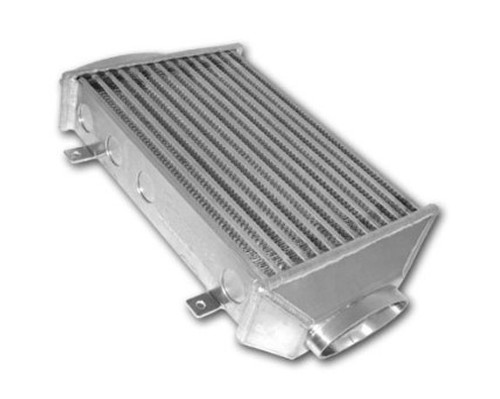
The same issues exist for turbocharged MINI’s improved charge air cooling is just as useful on a turbocharged engine as it is on a supercharged engine. Forge has a front mounted intercooler for the R56 and R57 that improves charge air cooling up to 10 °C at high rpm’s.
Front Mounted Intercooler on 2nd Generation MINI
Forge Motorsport Intercooler Upgrade
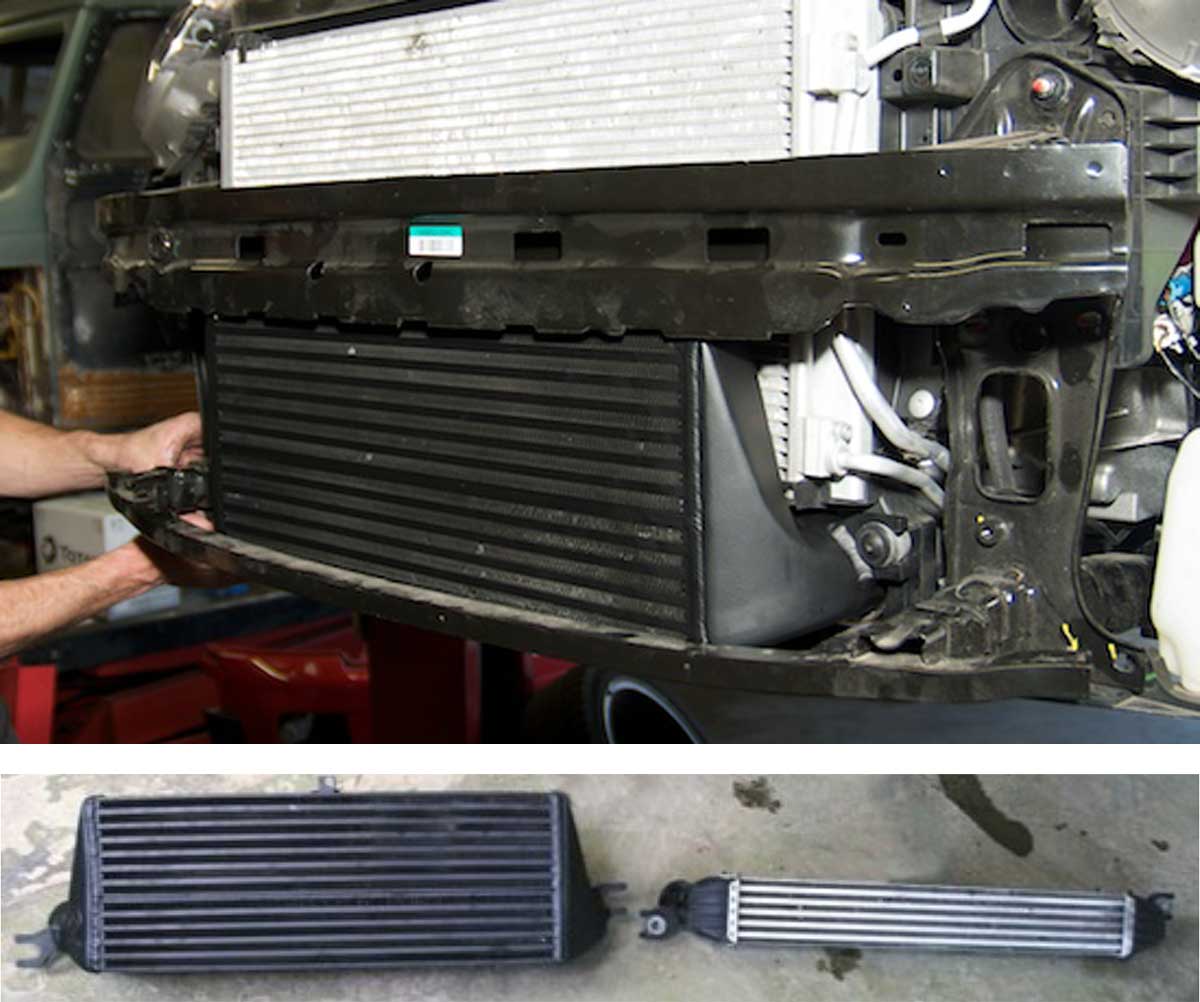
Wagner Tuning Intercooler Upgrade.
The Supercharged R53 MINI uses rubber bellows on the inlet and output of the intercooler. If these are cracked or torn, you will see very rough idling and poor engine performance if the engine will run at all. Improperly installing the intercooler bellows (causing a leak) also causes this sort of stumble and roughness. New stock intercooler bellows and clamps are available.
Intercooler Bellows Clamps 1st Generation Bellows Upgrade Kit 